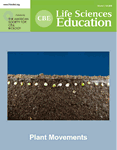Online Protocol Annotation: A Method to Enhance Undergraduate Laboratory Research Skills
Abstract
A well-constructed, step-by-step protocol is a critical starting point for teaching undergraduates new techniques, an important record of a lab's standard procedures, and a useful mechanism for sharing techniques between labs. Many research labs use websites to archive and share their protocols for these purposes. Here we describe our experiences developing and using a protocol website for the additional purpose of enhancing undergraduate research training. We created our lab's protocol website in a message board format that allows undergraduates to post comments on protocols describing the lessons they learned, questions that arose, and/or insights they gained while learning to execute specific research protocols. Encouraging and expecting students to comment on the protocols they are learning to execute is beneficial for both the student and for the lab in which they are training. For the student, annotations encourage active reflection on their execution of techniques and emphasize the important message that attending to and understanding details of a protocol is a critical factor in producing reliable data. For the lab, annotations capture valuable insights for future generations of researchers by describing missing details, hints, and common hurdles for newcomers.
INTRODUCTION
Research is a vital component of undergraduate science education; an undergraduate student's first research experience, often a semester or summer of mentored collaborative research in an established lab, propels the student from learning by memorizing textbook facts into learning by personal experience and independent thinking (National Research Council, 2003; Lopatto, 2007). An undergraduate entering a lab must use reasoning, trial and error, collaboration with other scientists, and resourcefulness to be successful. In the process of conducting research, students learn both the importance of identifying gaps in their understanding and the necessity of asking questions, two skills that can be difficult to teach in traditional science courses. So how do we, as mentors, foster independent thinking while still providing sufficient guidance for students to learn techniques that are more complicated than those they learn in traditional 3-h lab sessions? How can we stimulate critical-thinking, attention to detail, and problem-solving skills while furnishing the necessary foundational knowledge?
Clear instructions for executing specific research techniques are an essential component of that foundational knowledge for students new to laboratory research. Step-by-step protocols have obvious didactic value because they convey a critical sequence of events, but the logic behind the steps is not often explained in written protocols and additional knowledge is often assumed. To help students develop their research skills, we ask them to move beyond simply reading and practicing protocols to engaging actively with techniques in meaningful, reflective ways that help them consider the reasoning behind each step. We find that by expecting students to become active contributors to our lab's protocols, we can encourage higher levels of learning (Bloom, 1956) and enhance their lab experience. To this end, we created a protocol website (http://protocols.davidson.edu) in a message board format where students add their insights, suggestions, and cautions to our lab protocols (Figure 1). The message board format allows student comments to be added and organized, thereby improving the functionality over online protocol repositories. This approach is particularly useful for training undergraduates in a liberal arts college environment where students may spend as little as a single semester in the lab, and where there are no graduate students or postdocs to provide practical expertise.
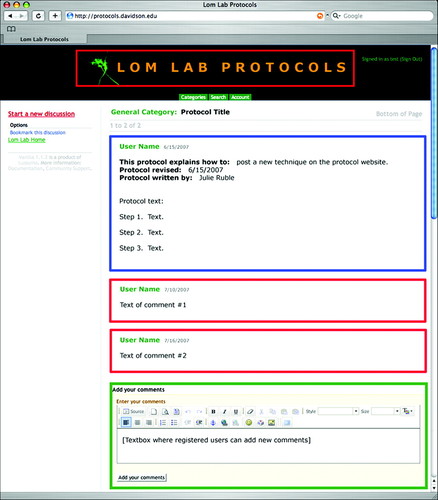
Figure 1. Schematic diagram of our interactive lab protocol website. The website is formatted as a message board. The protocol appears at the top of the page (blue border) with student annotations posted below (red borders). A text box (green border) provides a mechanism for registered users to post additional annotations.
Many research labs recognize the benefits of posting protocols online in a central repository to increase protocol accessibility and reduce the loss of valuable ideas and experiences. Online protocols also allow for the inclusion of color images, hyperlinks, video segments, etc. Having a video demonstration at the click of a button can be particularly helpful for anyone learning a new procedure, because video captures dynamic aspects of a protocol that cannot be conveyed by text or static images alone. Videos often communicate subtle and unwritten, yet critical, elements of a procedure such as how to hold instruments during a dissection, how to orient a piece of tissue, how to handle expensive and complicated lab equipment properly, etc.
Adding an interactive component to our protocol collection by posting protocols in a message board format transformed them into both a tool for training undergraduate research students and a richer source of information for our lab. The online protocols offer students technical guidance while stimulating higher levels of learning and participation. Students have the opportunity to reflect on the steps they are learning and contribute to the lab even before they are able to produce data.
IMPLEMENTATION
We used the free open-source message board software Vanilla (Lussumo, Toronto, Ontario) to create our interactive protocol website. The message board format allows protocols to be organized into category designations (such as General Lab Maintenance, Microscopy, Solutions, etc.; Figure 2). A clear, concise master version of the protocol is posted with annotations appearing below in distinct areas (Figure 1). A text box at the bottom of the page allows registered users to contribute (Figure 3). This format creates a simple, organized environment for student contributions without sacrificing the clarity of the original protocol or risking overwriting the original. The message board format has worked well for our purposes, but is by no means the only useful format. Another option for an interactive protocol website is a wiki, software that is often used for collaborative websites to which many users contribute. We opted against a wiki because changes or annotations edit the original version (though a history of changes is logged). Although many labs find that wikis work well for archiving lab protocols, for our purposes with undergraduates, the risk of inappropriate or incorrect alterations of the master protocol would be undesirable.
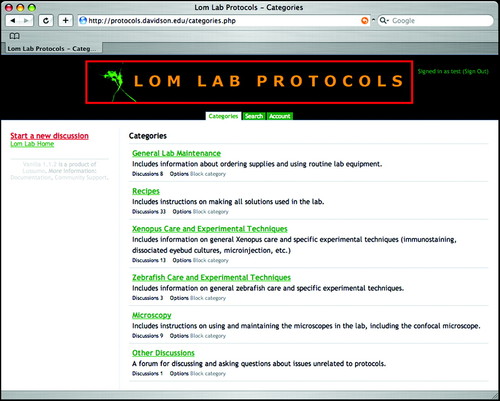
Figure 2. Protocol categories. The open-source message board software Vanilla (Lussumo, Toronto, Ontario) allows for the creation of numerous categories, such as “Microscopy” and “General Lab Maintenance.” These categories facilitate protocol organization, making the message board format a convenient and effective way to archive protocols.
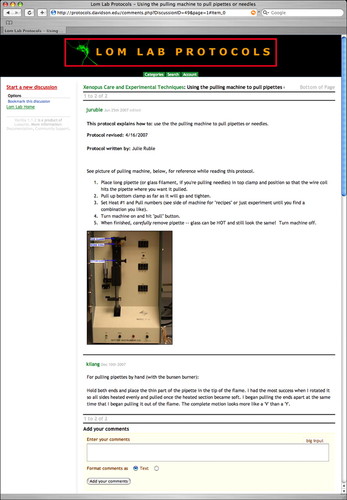
Figure 3. Example of an annotated protocol. The master protocol, in this case an overview of how to use a micropipette puller, is posted at the top and includes a labeled image of the instrument. Below is an example of a student annotation offering a hint on successful pipette pulling that is helpful but not central to the step-by-step protocol. The text box inviting registered users to add additional comments is below the annotation.
We introduce new student researchers to our lab's protocol website on their first day in the lab. We expect them to take notes on their experiences while using the protocols, including problems that arise, misunderstandings they may have, suggestions, and clarifications (Figure 4). We provide several guiding questions to stimulate productive reflection and annotations:
What do you wish you had known when you first started to learn this technique?
What advice would you give to an incoming student about to learn this technique?
Can you explain the rationale behind each step of this protocol?
What information is missing from this protocol?
What knowledge does this protocol assume the reader already has?
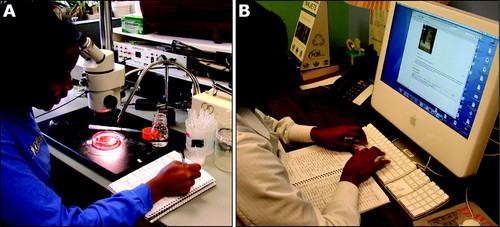
Figure 4. A student researcher's written notes (A) about executing a procedure are transformed into online annotations (B). Depositing procedural notes into a central, organized location means that insights, innovations, and strategies are shared and archived.
An essential consideration for the development of an interactive protocol website is the need for supervision and maintenance. Allowing democratic additions to the collections of protocols has the potential to create a disorganized repository for lab techniques. We minimize such disorganization by demonstrating proper ways to post a new protocol and annotate existing protocols; however, training cannot fully eliminate errant postings. Examples of some of the potential pitfalls include:
New protocols inadvertently posted as annotations to other protocols
Annotations of techniques posted as new protocols
Variation in the formatting of posts
Use of slang or imprecise terminology
Incorrect information
BENEFITS OF ONLINE PROTOCOL ANNOTATION
Encouraging students to annotate lab protocols as they master new techniques provides a mechanism for improving their attention to procedural details and compelling them to participate actively in their lab's efforts. Davidson College is an undergraduate-only institution, so our research labs comprise students getting their first glimpse into the world of scientific research. When entering a laboratory setting from a predominantly textbook science background, some students will flourish and others will fumble. Although a sink-or-swim approach can certainly weed out less talented or committed students, such an approach risks alienating students who simply need a bit more guidance to succeed. To ensure a diverse crop of young scientists, these latter students must communicate with their mentors and receive support to thrive (Campbell and Lom, 2006). The interactive protocol website is by no means intended as a substitute for one-on-one mentor–mentee interaction. Rather, it is intended as additional support for students learning new procedures and a tool to develop their attention to procedural details, note-taking skills, and collaborative learning. By increasing the resources each student has at his or her disposal, the interactive protocol website provides opportunities to increase students' success in the laboratory environment.
Training students to perform multi-step lab techniques requires considerable effort. We frequently train new research students via a Group Investigation course intended specifically to serve as a gateway into lab research. Group Investigation courses are not traditional weekly lab sections associated with lectures on a topic. Instead, Group Investigations allow six students to conduct a collaborative, semester-long novel research experiment (Lom and Watson, 2007; Lom, 2008). In these transitional courses, students learn techniques together, but master them at different rates. The group format encourages students to share insights into technical mastery but also risks encouraging competition and comparison between students. Posting protocol annotations online creates a paradigm where everyone can contribute: both the “natural” scientists who transition effectively into the research lab and those students who need more instruction. Students with confidence in the lab can focus their attention on the main protocol, whereas students with less confidence can avail themselves of the suggestions and cautions posted on the website by their labmates. Expecting students to annotate protocol websites also creates an environment where learning from failure or frustration is valued. Students who experience trouble mastering a technique are encouraged to transform their frustration into constructive comments. Providing the team of students with opportunities to review procedures carefully and convert frustrations into insights can help reveal the benefits of learning constructively from their peers. Although we have not implemented the interactive protocol website within a traditional undergraduate lab course, we can see potential benefits of incorporating a similar form of protocol annotation on a broader scale.
An interactive protocol website where students document the pitfalls they encounter and provide suggestions and/or revisions to protocols not only has the potential to facilitate student learning, but also provides the benefit of enhancing accurate and thorough institutional memory in the lab. Rather than relying on the PI to recall the details of why protocols were altered, good tricks that emerged, or how methods progressed over time, online annotated protocols are dynamic documents that detail the evolution of laboratory techniques with the rationale and sequence of alterations that might otherwise be lost. Students see that lab protocols are not static doctrine, but guidelines that evolve and improve with technological advances, bursts of creativity, and even by lessons learned the hard way. The protocol website's role as a memory bank for the lab is also useful for students, because it chronicles their learning process. When students can click through the protocol website to view the notes they have contributed on protocols that were originally foreign, their progress becomes tangible. They see the distance they have traveled, which can lead to increased confidence. This sort of confidence boost is vital for retaining young scientists, especially during first laboratory research experiences, where learning curves can be particularly steep and immediate rewards scarce and/or difficult to see (Tobias, 1992; Lopatto, 2004, 2007).
Another benefit of a message board style protocol website is that it allows the clear master version of a protocol to be posted while also revealing that methods can be nuanced. For instance, information regarding the scheduling of a multi-day procedure may be distracting within the master protocol, but such an annotation on timing can be particularly helpful for a new student trying to allot appropriate time in the midst of a rigid class schedule. By adding such helpful advice in the form of a comment on the master protocol, the tip is saved for posterity in an appropriate location on the website without obfuscating the main procedural details. Lessons learned and mistakes made, when recorded, become tools for both training future students and streamlining methods. Learning curves become contributions.
Requiring students to contribute comments on protocols throughout a semester also provides a convenient and quantifiable tool for mentors to assess student participation and engagement. The number and quality of protocol annotations supply a tangible and quantifiable indication of student engagement, note-taking, and attention to detail, all aspects of lab research that contribute significantly to the often-subjective “participation” component of a student's final grade. Moreover, protocol annotations have the potential to be meaningful and lasting contributions that may provide greater motivation to complete the task thoughtfully. Because comments are saved from semester to semester, the opportunities for students to make novel comments on some protocols will decrease. However, although students may have to exert effort to find ways to better a technique and fulfill their annotation requirement, we do not feel that we will reach a point when there is nothing more to be added to the site. Our lab's experimental focus constantly evolves as we finish current experiments and begin exploring other avenues of investigation, adding new procedures to our repertoire. The number and variety of new protocols added to the site suggest that students will always be able to annotate an existing protocol or even post a new one.
Finally, creating a website where students participate in the development of best laboratory practices provides a less intimidating forum for more introverted undergraduates to participate. While some students feel comfortable questioning the techniques of more experienced researchers in person, others can understandably be intimidated by their own inexperience. Students' increasing use of popular forms of online communication such as e-mail, blogs, and message boards suggests that students who may not speak up at a lab meeting may be more likely to contribute text to a webpage (Machart and Silverthorn, 2000; Yu and Yu, 2002).
EVALUATION
In an anonymous end-of-semester survey, we asked the six students enrolled in our semester-long Group Investigation course (BIO 351: Microscopy & Imaging in Neuroscience) to comment on their experiences annotating procedures on our lab's protocol website. Students recognized the experience as beneficial both for their education and for the future of the lab. Several students commented that annotating lab protocols encouraged more active learning. For example, one student mentioned that protocol comments “provided an opportunity to clarify vague aspects of lab protocols.” Another student noted that the annotation assignment encouraged discussions among the lab members, which led to “many insights to better technique.” In some cases, the act of annotating protocols also functioned as a lesson in careful record keeping. One student recounted initial difficulty annotating the protocols on account of neglecting to keep track of problems encountered while performing new techniques, but said that requiring protocol annotations encouraged better note-taking. Annotating the lab protocols also provided students with a sense of accomplishment and ownership of the lab work. One student commented that adding to the protocols “made me realize how much I had learned in practical lab skills.” Beyond the benefits to their own education, students recognized and enjoyed the fact that annotating protocols allowed them to enhance others' education. Students commented, “I liked being able to contribute,” and “[the protocols] provided an opportunity […] to offer hints for future students.”
Overall, we have found that encouraging students to annotate our lab's online protocols has been a rewarding experience for both students and mentors that is well worth the modest time investments in creating and moderating the protocol website. These annotations improve our lab's written protocols and provide instructors with a concrete tool for evaluating student participation. Additionally, survey results indicate that annotating the protocols helped students to understand the methods they learned and demonstrated the subtleties of scientific research. By creating a record of technique changes and student insights, the interactive protocol website also serves as a chronicle of student learning that can boost students' confidence in their research ability. These benefits, combined with the simplicity of website maintenance, make online protocol annotations a valuable tool for undergraduate research training.
ACKNOWLEDGMENTS
We thank Kristen Eshleman, Alex Wales, and Davidson's Instructional Technology Group for their generous and valuable help with the technical aspects of establishing our protocol website. In addition, we thank Dr. Fiona Watson for participating in early discussions about creating our lab's protocol website. We also thank our undergraduate student researchers for adding their valuable thoughts to our lab protocols. This work was supported by the National Science Foundation, the Howard Hughes Medical Institute, and Davidson College.


